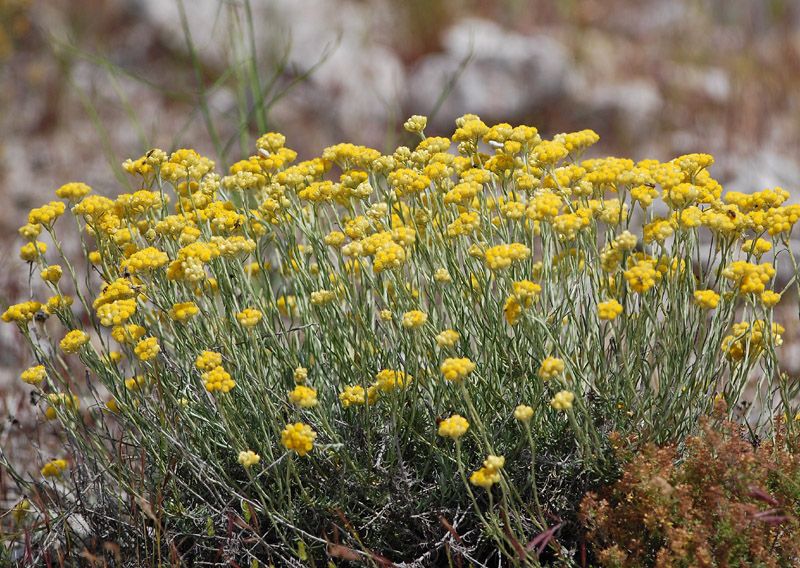[1] Potter's New Cyclopaedia of Botanical Drugs and Preparations R.C. Wren
Revised by Elizabeth M. Williamson and Fred J Evans. First published in Great
Britain in 1988 and reprinted in 1989 and 1994 by the C. W. Daniel Company Limited.
1 Church Path, Saffron Walden Essex. Published 1988 Printed and bound by Biddles,
Guildford ISBN 085207 1973.
Images
1.
pinterest.com.au
Helichrysum spp. contain volatile oil consisting of nerol and neryl acetate,
sesquiterpenes, triterpenes and flavonoids.[1]
References
[1] Encyclopedia of Common Natural Ingredients used in Food Drugs and Cosmetics,
Albert Y. Leung. Pub. John Wiley & Sons Inc. (1980) NY
 Helichrysum
stoechas. Gnaphalium stoechas,
G. citrunum, Stoechas citrina
Eternal flower, Goldilocks Family:
Asteraceae
Helichrysum
stoechas. Gnaphalium stoechas,
G. citrunum, Stoechas citrina
Eternal flower, Goldilocks Family:
Asteraceae